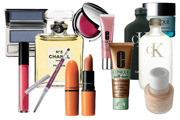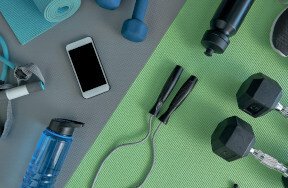Do you know how your eyes work? Or why some kids have to wear glasses in order to read what the teacher is writing at the front of the classroom? Since Eye Exam Month falls in August, Kidzworld is reminding you to get your vision checked before you head back to school, as well as bringing you all the facts you need to know about your eyes.
How Your Eyes Work
The human eye is about the size of a ping pong ball, with a bulge at the front. It is mainly made up of the cornea, iris, pupil, lens, retina and optic nerve. Each part plays an important role in how an image is transferred to your brain. When you look at something, light reflects off of the object and enters your eye through the pupil (the black dot in the middle of the eye). The iris (the colored part around the pupil) controls how much light goes through the pupil. If it's dark, the iris' muscles will make the pupil dilate (get bigger) to let in more light. If it's bright, the pupil will constrict (get smaller) to let in less light. This light then enters the lens (similar to a camera lens), which focuses the picture onto the retina at the back of your eyeball. The retina changes the light into a message and sends it down the optic nerve to the brain.
When the World Is a Blur
Did you know that you're born farsighted with a vision of 20/400? That means you can only see the big "E" on an eye chart! By the age of two, your vision improves to 20/20 so that you're able to see the smallest letters on the bottom of the chart. But as you get older, your vision can go from clear to blurry - and it has nothing to do with those eye crusties you wake up with. It's usually due to genetics, so if your mom or dad has vision problems, chances are high that you will too. If you find yourself squinting to see things clearly or you're bringing your book a lot closer to your nose than you did before, then you probably need corrective eyewear, like glasses or contact lenses, to help you see properly.
Near, Far, Wherever You Are...
You're nearsighted if you can only read things that are close to you. But you're farsighted if words are cystal clear when they're far away. Wearing glasses or contacts can correct both of these vision problems. If you're having problems with your eyesight, make an appointment with an eye doctor (ophthalmologist or optometrist) to get a vision test. You should see your eye doctor at least once a year to maintain good eyesight.
Did You Know?
- One in four kids aged five to 12 have vision problems in the US.
- Having 20/20 vision means you can see an object clearly from 20 feet away.
- Carrots, milk and cheese are good for your eyes because they're full of vitamin A, which helps you see at night.
- August is Eye Exam Month, so be sure to get your eyes checked out before heading back to the classroom!
Related Stories:
- What You Need to Know About Wearing Contacts
- Protect Yourself Against Pink Eye!
- Taking Care of Your Teeth
- More Health and Body Info!

































